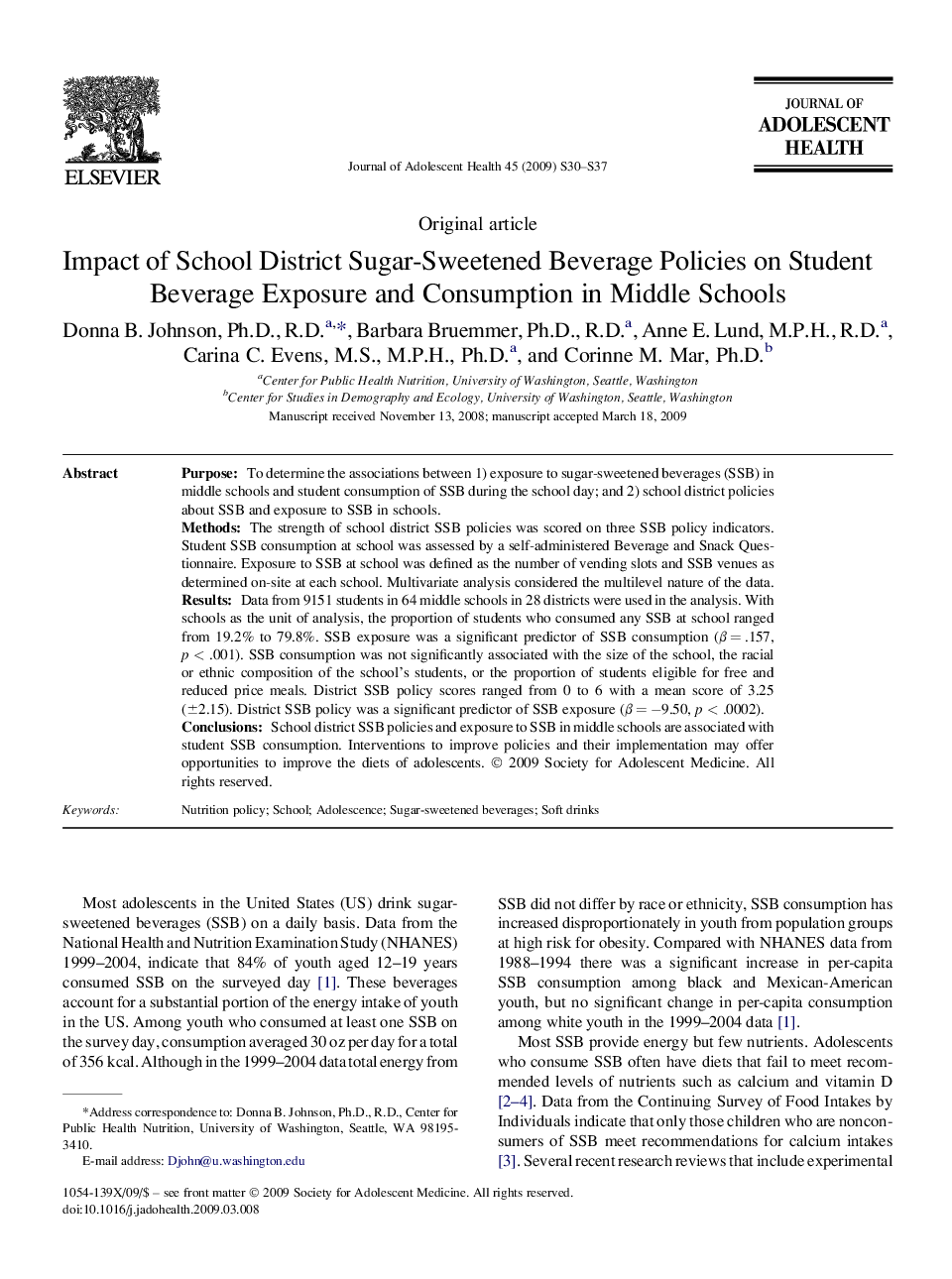| Article ID | Journal | Published Year | Pages | File Type |
|---|---|---|---|---|
| 1080807 | Journal of Adolescent Health | 2009 | 8 Pages |
PurposeTo determine the associations between 1) exposure to sugar-sweetened beverages (SSB) in middle schools and student consumption of SSB during the school day; and 2) school district policies about SSB and exposure to SSB in schools.MethodsThe strength of school district SSB policies was scored on three SSB policy indicators. Student SSB consumption at school was assessed by a self-administered Beverage and Snack Questionnaire. Exposure to SSB at school was defined as the number of vending slots and SSB venues as determined on-site at each school. Multivariate analysis considered the multilevel nature of the data.ResultsData from 9151 students in 64 middle schools in 28 districts were used in the analysis. With schools as the unit of analysis, the proportion of students who consumed any SSB at school ranged from 19.2% to 79.8%. SSB exposure was a significant predictor of SSB consumption (β = .157, p < .001). SSB consumption was not significantly associated with the size of the school, the racial or ethnic composition of the school's students, or the proportion of students eligible for free and reduced price meals. District SSB policy scores ranged from 0 to 6 with a mean score of 3.25 (±2.15). District SSB policy was a significant predictor of SSB exposure (β = −9.50, p < .0002).ConclusionsSchool district SSB policies and exposure to SSB in middle schools are associated with student SSB consumption. Interventions to improve policies and their implementation may offer opportunities to improve the diets of adolescents.
